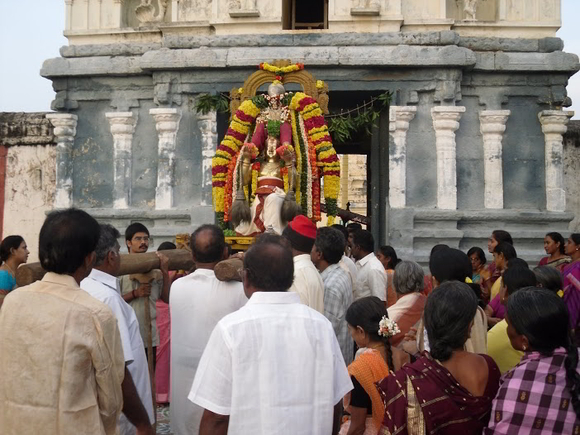Mannarpolur Azhagu Mallari Krishnaswami Temple Mannarpolur is a small village on the banks of ‘Kalindi’ river near Sullurpeta in Nellore District of Andhra Pradesh. There is a very ancient temple in this village, which is almost a sleepy little village. Once upon a time, this 

must have been an important village, certainly far more important than Sullurpeta which must have been of a fairly recent origin. The basis for saying that Mannarpolur must have been an important village is the fact that this temple is believed to date back to the 10th century 

and is the only important temple in a radius of about 40 kms. There is no other important temple apart from this temple until Srikalahasti in Chittor District or till Nellore.
The temple itself has many unusual features. The main shrine has Lord Krishna with Satyabhama and
The temple itself has many unusual features. The main shrine has Lord Krishna with Satyabhama and

Jambavathi as his Consorts. It is believed that Lord Krishna presented the Samathakmani to Satyabhama and hence both Satyabhama and Jambavathi worshiped in the main shrine. Perhaps there is no other temple, anywhere in the country, where Jambavathi is present as the Divine
Consort. As one enters the main shrine, there is a small idol of Lord Venkateswara on the left side of the Mahamandapa and just outside the Sanctum Sanctorum. To the right of the main shrine there is a separate shrine for Sri Rukmini, who is worshiped as Soundaravalli Thayar. 

Behind the main shrine, is small shrine with a big moorthi of Jambhavant. To the left of the main, there is a shrine for Lord Rama with Sita and Lakshmana on either side and Hanuman. An unusual feature here is that there are two Dwajasthambams and two Balipeetams within the same 

• • •
Missing some Tweet in this thread? You can try to
force a refresh













